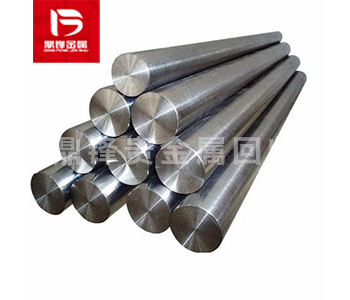
Ruthenium Alloy Recycling
Ruthenium alloys are alloy materials composed mainly of ruthenium and other metal elements (platinum, iridium, palladium, lead, etc.). Ruthenium alloys are widely used in many special fields because they combine the excellent properties of ruthenium (high temperature stability, corrosion resistance, catalytic activity, etc.) with the wear resistance, strength, electrical conductivity, etc. of other metals. These alloys are often used in the manufacture of parts, catalysts, electrode materials, aerospace equipment, chemical reactors, and electronic components that operate in high temperature environments. Ruthenium alloys have excellent corrosion resistance, so they perform well in harsh environments, especially for use in equipment that must withstand high temperatures, high pressures, and corrosive gases for long periods of time. Waste ruthenium alloys are one of the recycling sources of ruthenium-containing waste. Other recycling sources of ruthenium-containing waste include ruthenium-iridium alloy recycling, ruthenium-iridium mesh recycling, ruthenium slag recycling, ruthenium sheet recycling, ruthenium slurry recycling, ruthenium tube recycling, and ruthenium sheet mesh recycling.
- Parameter
- Related Questions and Answers
-
Name : Ruthenium Alloys
-
Use : Electrode materials, reactors under high temperature and pressure conditions, catalytic reactions, etc.
-
Application Areas : Chemical industry, catalyst field, electronics industry, etc.
-
Appearance and properties : Alloy
-
Settlement Method : On-site payment
-
Recycling Type :Ruthenium recycling
-
Door-to-door recycling:worldwide
-
Customer service: Free content testing and door-to-door recycling
Ruthenium Chloride Recycling
Ruthenium chloride (RuCl₃) is a compound consisting of ruthenium and chlorine, usually in the form of black or dark green crystals or powder. It is a common compound of ruthenium and is widely used in catalytic reactions, especially in processes such as organic synthesis and hydrogen production. Ruthenium chloride has good thermal stability at high temperatures and strong catalytic activity, so it is often used as a catalyst or catalyst precursor. It can also be used in the production of ruthenium metal and as a raw material for ruthenium-based alloys and materials. Ruthenium chloride is also used in fuel cells, electrocatalysis, certain chemical analyses, and materials science research. Waste ruthenium chloride is one of the recycling sources of ruthenium-containing precious metal catalyst waste. Recycling of ruthenium-containing precious metal catalyst waste also includes ruthenium oxide recycling, ruthenium acetate recycling, ruthenium carbon recycling, ruthenium zinc catalyst recycling, ruthenium iodide recycling, ruthenium aluminum oxide catalyst recycling, etc.
Search : Ruthenium Chloride RecyclingRuthenium Iodide Recycling
Ruthenium iodide (RuI₃) is an inorganic compound of ruthenium, usually a dark brown or black solid. It is a ruthenium(III) compound produced by the reaction of ruthenium with iodine, and has high stability and good chemical properties. Ruthenium iodide has important applications in the field of catalysis, especially in certain redox reactions, where it can significantly improve the efficiency of reactions as a catalyst. Ruthenium iodide also plays an important role in organic synthesis and photoelectrochemical reactions. Due to its strong catalytic activity, ruthenium iodide has been widely studied and applied in high-tech fields such as electrochemistry, fuel cells, and photoelectrocatalysis. Waste ruthenium iodide is one of the raw materials for recycling ruthenium-containing precious metal catalysts. Other raw materials for recycling ruthenium-containing precious metal catalysts include recovery of ruthenium oxide, recovery of ruthenium chloride, recovery of potassium ruthenium chloride, recovery of ruthenium acetate, recovery of ruthenium trichloride, and recovery of bis(cyclopentadienyl)ruthenic acid.
Search : Ruthenium Iodide RecyclingRuthenium Slag Recycling
Ruthenium slag refers to the solid waste or residues produced after ruthenium metal reacts with other substances during the smelting, refining, or use of ruthenium. As ruthenium is a precious metal, it is usually smelted under conditions of high temperature and pressure. Therefore, ruthenium slag often contains small amounts of other metallic impurities, such as iridium and platinum, in addition to ruthenium. The composition and properties of ruthenium slag may vary depending on the specific process by which it is produced, and it usually needs to be recovered and processed in a specific way to extract the ruthenium and other precious metals it contains. Ruthenium slag may also be used as a by-product in catalysis in some cases, or chemically processed to produce other ruthenium alloy materials. Waste ruthenium slag is one of the recycling pathways for ruthenium-containing waste. Other recycling pathways for ruthenium-containing waste include ruthenium water recycling, ruthenium slurry recycling, ruthenium slag recycling, ruthenium powder recycling, ruthenium gold recycling, ruthenium wire recycling, and ruthenium block recycling.
Search : Ruthenium Slag RecyclingRuthenium Alloy Recycling
Ruthenium alloys are alloy materials composed mainly of ruthenium and other metal elements (platinum, iridium, palladium, lead, etc.). Ruthenium alloys are widely used in many special fields because they combine the excellent properties of ruthenium (high temperature stability, corrosion resistance, catalytic activity, etc.) with the wear resistance, strength, electrical conductivity, etc. of other metals. These alloys are often used in the manufacture of parts, catalysts, electrode materials, aerospace equipment, chemical reactors, and electronic components that operate in high temperature environments. Ruthenium alloys have excellent corrosion resistance, so they perform well in harsh environments, especially for use in equipment that must withstand high temperatures, high pressures, and corrosive gases for long periods of time. Waste ruthenium alloys are one of the recycling sources of ruthenium-containing waste. Other recycling sources of ruthenium-containing waste include ruthenium-iridium alloy recycling, ruthenium-iridium mesh recycling, ruthenium slag recycling, ruthenium sheet recycling, ruthenium slurry recycling, ruthenium tube recycling, and ruthenium sheet mesh recycling.
Search : Ruthenium Alloy RecyclingProduct Details
ルテニウム合金は、ルテニウムを主成分とし、その他の金属元素(白金、イリジウム、パラジウム、鉛など)から構成される合金材料です。ルテニウム合金は、ルテニウムの優れた特性(高温安定性、耐腐食性、触媒活性など)と他の金属の耐摩耗性、強度、導電性などの特性を兼ね備えているため、多くの特殊分野で広く使用されています。これらの合金は、高温環境で動作する部品、触媒、電極材料、航空宇宙機器、化学反応器、電子部品の製造によく使用されます。ルテニウム合金は耐腐食性に優れているため、過酷な環境でも優れた性能を発揮し、特に高温、高圧、腐食性ガスに長時間耐える必要がある機器での使用に適しています。
一般的なルテニウム合金の種類には主に次のものがあります:
1. ルテニウム白金合金(Ru-Pt):ルテニウム白金合金は、優れた高温安定性、耐腐食性、良好な触媒特性を備えたルテニウムと白金の合金です。ルテニウムを添加するとプラチナの耐高温性と耐化学腐食性が向上し、プラチナは合金の触媒活性と電気伝導性を高めます。ルテニウム-プラチナ合金は、反応速度を高め、副産物の生成を減らすために、特に石油化学製品や精密化学製品の生産において触媒の製造によく使用されます。さらに、ルテニウム - プラチナ合金は、優れた導電性と高温耐性を備えているため、燃料電池、水素化反応、電気分解反応などのハイエンド触媒分野でも広く使用されています。
2. ルテニウム-イリジウム合金(Ru-Ir):ルテニウム-イリジウム合金は、その極めて高い融点、優れた耐腐食性、耐酸化性により、過酷な作業環境で広く使用されています。イリジウムを添加すると合金の強度と耐高温性が大幅に向上し、ルテニウムはより高い触媒活性と耐化学腐食性を提供します。ルテニウム-イリジウム合金は航空宇宙分野で広く使用されており、特にノズルや燃焼室などの高温部品に使用されており、過酷な作業条件にも耐えることができます。さらに、化学工業における高温触媒反応、電極材料、耐腐食性が求められる特定の機械部品にも広く使用されています。
3. ルテニウム-パラジウム合金(Ru-Pd):ルテニウム-パラジウム合金は、ルテニウムの触媒活性とパラジウムの優れた導電性を兼ね備えており、水素化、水素化分解、アンモニア合成などの化学プロセスで広く使用されています。ルテニウム-パラジウム合金は優れた触媒性能を有し、特に石油化学や精密化学の合成に適しており、反応の選択性と効率を向上させます。水素化反応において、ルテニウム-パラジウム合金は水素と有機分子の付加反応を効果的に促進し、副産物の生成を減らすことができます。さらに、ルテニウムパラジウム合金は、電池のエネルギー密度とサイクル安定性を向上させるために、電池や燃料電池の電極材料の製造にも一般的に使用されています。
4. ルテニウム鉛合金(Ru-Pb):ルテニウム鉛合金は、耐高温性と耐腐食性が高く、高温環境下での電極や電池材料によく使用されます。鉛を添加すると合金の可塑性と耐摩耗性が向上し、ルテニウムは合金に高い触媒活性と化学的安定性を与えます。ルテニウム鉛合金は、塩素アルカリ電気分解などの電気分解反応における電極材料としてよく使用され、電気分解の効率と安定性を効果的に向上させることができます。ルテニウム鉛合金は耐腐食性があるため、特定の特殊な高温化学反応にも使用され、長期間にわたってその性能を維持することができます。
5. ルテニウム銀合金(Ru-Ag):ルテニウム銀合金は、銀の優れた導電性とルテニウムの触媒活性を兼ね備えており、高性能電子部品や電気接点材料の製造に適しています。銀を加えると合金の電気伝導性が向上し、ルテニウムを加えると触媒特性と耐腐食性が向上します。ルテニウム銀合金は、高電流および高温条件下で優れた性能を発揮し、高周波電気機器、電子部品、ハードディスクドライブ、接点材料に広く使用されています。さらに、この合金は水素化および水素化反応にも特定の用途があり、反応速度と選択性を向上させることができます。
6. ルテニウム銅合金(Ru-Cu):ルテニウム銅合金は、優れた電気伝導性、耐摩耗性、高温安定性を備えているため、高周波電子部品や電気接点材料の製造によく使用されます。銅を加えると合金の導電性と可塑性が向上し、ルテニウムを加えると耐腐食性と耐高温性が向上します。この合金は、コンデンサ、電気接点、コネクタなどの高精度電子機器によく使用されます。ルテニウム銅合金は高性能電極材料の製造にも使用でき、燃料電池やスーパーキャパシタの導電性と安定性が向上します。
7. ルテニウムモリブデン合金 (Ru-Mo): ルテニウムモリブデン合金は、優れた高温性能と機械的強度を備えているため、高温および高腐食環境に耐える材料の製造によく使用されます。モリブデンを添加すると合金の強度と熱安定性が向上し、ルテニウムは優れた触媒特性と耐腐食性をもたらします。ルテニウムモリブデン合金は、航空宇宙、冶金、化学産業、特に高温高圧条件下での反応器、触媒、構造部品に広く使用されています。また、高温化学反応など、高い耐食性が求められる分野でも使用されています。
廃ルテニウム合金は、ルテニウム含有廃棄物のリサイクル源の 1 つです。ルテニウム含有廃棄物の他のリサイクル源には、ルテニウム - イリジウム合金リサイクル、ルテニウム - イリジウムメッシュリサイクル、ルテニウムスラグリサイクル、ルテニウムシートリサイクル、ルテニウムスラリーリサイクル、ルテニウムチューブリサイクル、ルテニウムシートメッシュリサイクルなどがあります。ルテニウム含有スクラップのリサイクルが必要な場合は、当社の 24 時間対応サービス ホットラインにお電話ください。鼎鋒貴金属リサイクルおよび精製メーカーは、利益の差を生む中間業者を排除した独立したリサイクルおよび精製工場を備えており、専門の技術チームと顧客サービス担当者が 1 対 1 のサービスを提供し、リサイクル プロセス中の顧客のプライバシーを確保します。

